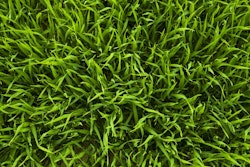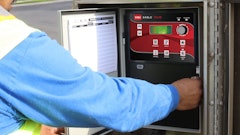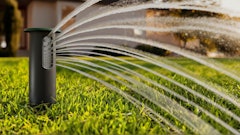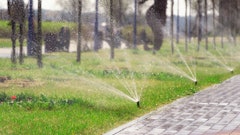The U.S. Environmental Protection Agency (EPA) is positioned to protect water in all forms, from ground water to underground sources to water coming out of the public’s tap. WaterSense, a partnership program sponsored by the EPA, was set up to work with local water utilities, product manufacturers, and retailers on the use of water-efficient products and practices among consumer and commercial audiences. Reinforced through a WaterSense label, WaterSense, according to the EPA, “helps consumers easily identify water-efficient products in the marketplace.” WaterSense engineering standards for low-flow toilets, shower heads, irrigation equipment and other engineered products are practical and measureable.
However, a disturbing development has taken place in the WaterSense program that threatens to undermine the very water quality standards the agency was established to protect and potentially undermine the well-deserved value of the WaterSense label.
Under its WaterSense new home specification, EPA developed and released draft specifications for new home construction. Home builders that follow the specs will be able to market a WaterSense home. The draft specs include restrictions on the amount of turf grass that can be used on a home site. These specs are intended for implementation nationwide, border to border, coast to coast – with no exceptions. These specs do not take into account the fact that homes built in Seattle versus Oklahoma City are erected in vastly different climates.
Under current specs, no allowances for regional differences in climate or turf species exists; new home sites will be limited to 40 percent grass use on the site’s “landscape-able” area. It is a one size-fits-all specification. This means the amount of grass that can be planted on a Portland, OR home site would be the same as a home in Las Vegas. Imagine a Tucson desert landscape in Seattle and Boston neighborhoods. And, this also means, extreme desert locales would be allowed 40 percent turfgrass use on a home lot where it should not be used, requiring massive watering.
Our country is simply too large and complex, climate-wise, with multiple climatic zones for a single-national government standard on grass use for home lawns.
Yes, water should be used in a responsible manner. Lush green lawns of Kentucky Bluegrass may not be appropriate for desert landscapes and the landscape industry should work toward best management practices that support maximizing environmental benefits in a conscientious manner. The key is to plant the right plant in the right place to maximize its environmental, lifestyle and economic benefits, not eliminate them.
But, with these specs, the EPA singles out turfgrass as environmentally harmful, unfairly labeling it as a “water hog,” despite the fact that drought resistant turfgrasses are widely available in addition to the existence of large areas of the country that do not have rainfall or water availability issues.
Further, the myriad environmental benefits of turfgrass are ignored under these specs—from its well-documented carbon absorption and sequestering properties to superior water filtration, from its runoff and erosion control capabilities to dust and particulate matter capture properties, from its ability to combat the heat island effect to cooling our urban environments. These benefits—along with significant lifestyle benefits associated with a home’s yard for family use and pets -- are somehow completely disregarded.
Yet, despite these facts, the EPA continues to declare war on turfgrass through such erroneous specs as the current WaterSense program promotes, even recommending mulch and artificial turf over grass green space. (Mulch and plastic grass do not filter air, remove water pollutants, produce oxygen or sequester carbon dioxide. How is this better?)
Plants are real, living things not engineered or manufactured to a specific standard. But, rather, they are ever changing and adaptable to variable climatic conditions. And, managed responsibly, have enormous benefits.
EPA has held several public hearings on its WaterSense new home specification, where these landscape criteria have come under attack as being arbitrary, non-responsive to local and regional variances and not based on science. Turfgrass utilization has not been evaluated in a holistic environmental assessment. Yet, while the agency has altered the draft specification to reflect other industries’ concerns, the turf restrictions remain in place. EPA plans to finalize its WaterSense new home specification in November of this year.
If these criteria are adopted in their current form, they will have adverse environmental, lifestyle and economic consequences, and may actually create scenarios that use more water (not less) and severely depress jobs in a host of businesses involved in the $150 billion a year lawn and landscape industry.
In its current form, the landscape criteria of the EPA’s WaterSense program, which limits the amount of turfgrass on every home built in the United States, is simply bad public policy that will produce negative outcomes for our environment and will eliminate the green jobs for which the current Administration has been vocally supportive.



















